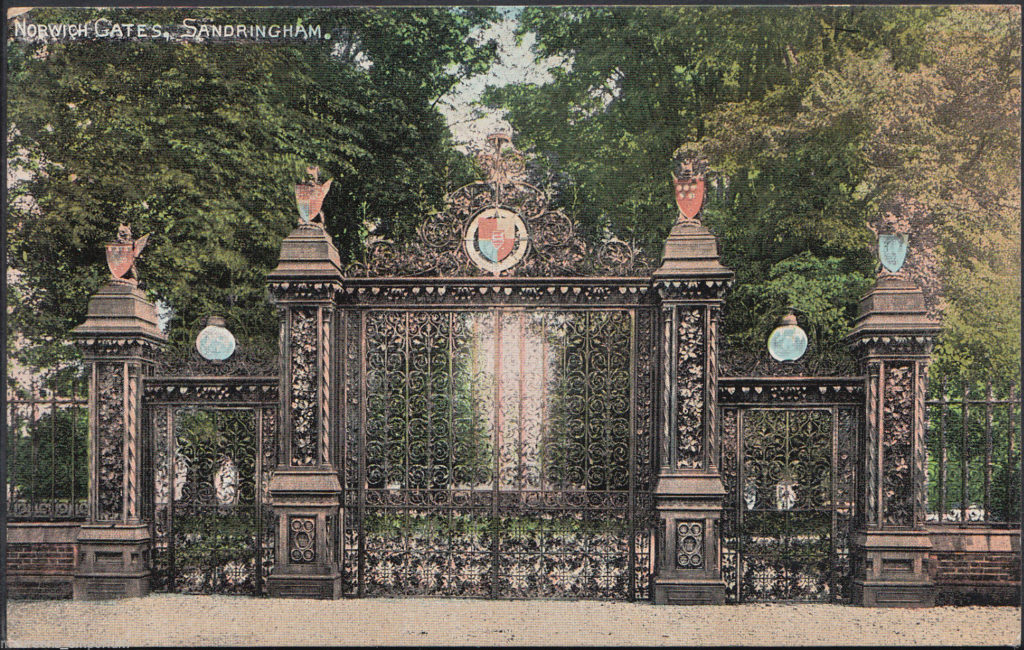
This fireback came up for auction in 2019 and when I saw it I was intrigued by the design and by its distinctive grouping of shields. A Norfolk connection was indicated in the information provided by the auction house and I was able to identify three of the arms displayed as those of Norwich, Great Yarmouth and King’s Lynn. An email to the Norfolk Heraldry Society elicited an informative response: the other shields were of Thetford and, in the centre, those of Robert John Harvey, sometime Sheriff of Norfolk, whose shield was intended to represent the county (its official grant of arms was not received until 1904). Furthermore, they were in an arrangement that was on the ‘Norwich Gates’ at the Royal residence of Sandringham.


Sandringham had been purchased in 1863 by the Prince of Wales (later Edward VII) as a residence for him and his new wife, Princess Alexandra of Denmark, and the grand gates had been a gift to them from the people of Norfolk on the occasion of their marriage that year. They had been designed by Thomas Jeckyll and made by the Norwich firm of iron founders, Barnard, Bishop and Barnard, with whom Jeckyll had a long association. They had been displayed the previous year at the International Exhibition at South Kensington An early photograph of the gates shows them without panels, they being added, it seems, soon after installation.

What evidently happened is that the pattern for the two panels – they were fitted into recesses in the main pedestals facing away from the house – was reused to cast the fireback, maybe several of them, as well as at least one separate plate, seen here painted with the appropriate colours for the shields, which was perhaps a spare gate panel. The panels remain on the gates to this day.